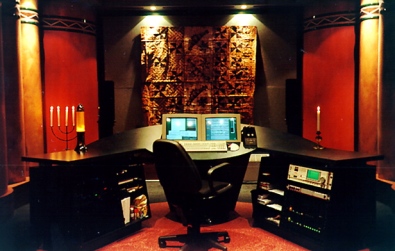 Last week we talked about analog gear emulators. But what about room emulators? Can you really get a clean, publication-ready mix through your headphones?
Last week we talked about analog gear emulators. But what about room emulators? Can you really get a clean, publication-ready mix through your headphones?
Like many of you, I work out of my home and strive to get a mix from my living room that sounds like it came from a commercial studio. And, also like many of you, the mix does not always translate as well as I would like. Why is that, and how do we compensate to achieve more consistent results?
I’ve been working as a mix engineer for more than 20 years. In that time, I’ve worked in some great-sounding rooms. I’ve also worked in some less-than-great sounding rooms. But in both cases, I always knew what to expect and what to listening for. I also had a set of professional headphones to hear the details that the room could not reproduce. But what happens when you’ve bought good-sounding studio monitors, placed them correctly in your room, acoustically treated the room, and yet you still can’t get your mixes to translate? Enter the room emulators for your headphones.
What these emulators try to do is fool your ears by way of psychoacoustic algorithms into thinking you’re in a real room and not actually listening through headphones. With headphones, each ear is isolated from the other so you’re not hearing the room’s pre-delay or reflextion. You’re not getting the real room sound and therefore cannot distinguish the source of the sound in your stereo field in the same way that you would in an open space. You have a lack of crosstalk. Also, in an open room, you have to account for room reflections at different frequencies. These plugins are designed to compensate for those and other dynamics to give you the illusion of listening to music in an open place.
In the last few years, I tried a couple of these emulators. Some because I was on the road and had no consistent room. Some I tried just out of curiosity. I wondered if I could get an ideal-sounding room with all its reflective and acoustic properties through my headphones alone. The final conclusion for my ears was no, these emulators do not work well for me.
What does work for me is learning my room. All the acoustic treatment in the world can’t get you the results you can get just by listening to your favorite artists through your home studio rig. It’s essential to learn what commercially mixed music is supposed to sound like through your setup.
Don’t get me wrong, speaker placement is key, and we’ll cover this in another blog. Oftentimes acoustic treatment is essential as well. After all, most home mixing rooms were not typically designed to be a studio listening environment.
Some people swear by their room emulator plugins. What I’ve found to be the most effective practice is to study the nuances of my particular mixing space using different EQ curves to emulate different speaker types (next week’s blog).
Either way, give it a try. If it doesn’t work for you like it does for me, then try a free trial of one of the high-quality room emulation plugins out there. But I think that you’ll find that some ear training for your room will go a long way. Worst-case scenario? You get to listen to your favorite artists for a while. And what could suck about that?
